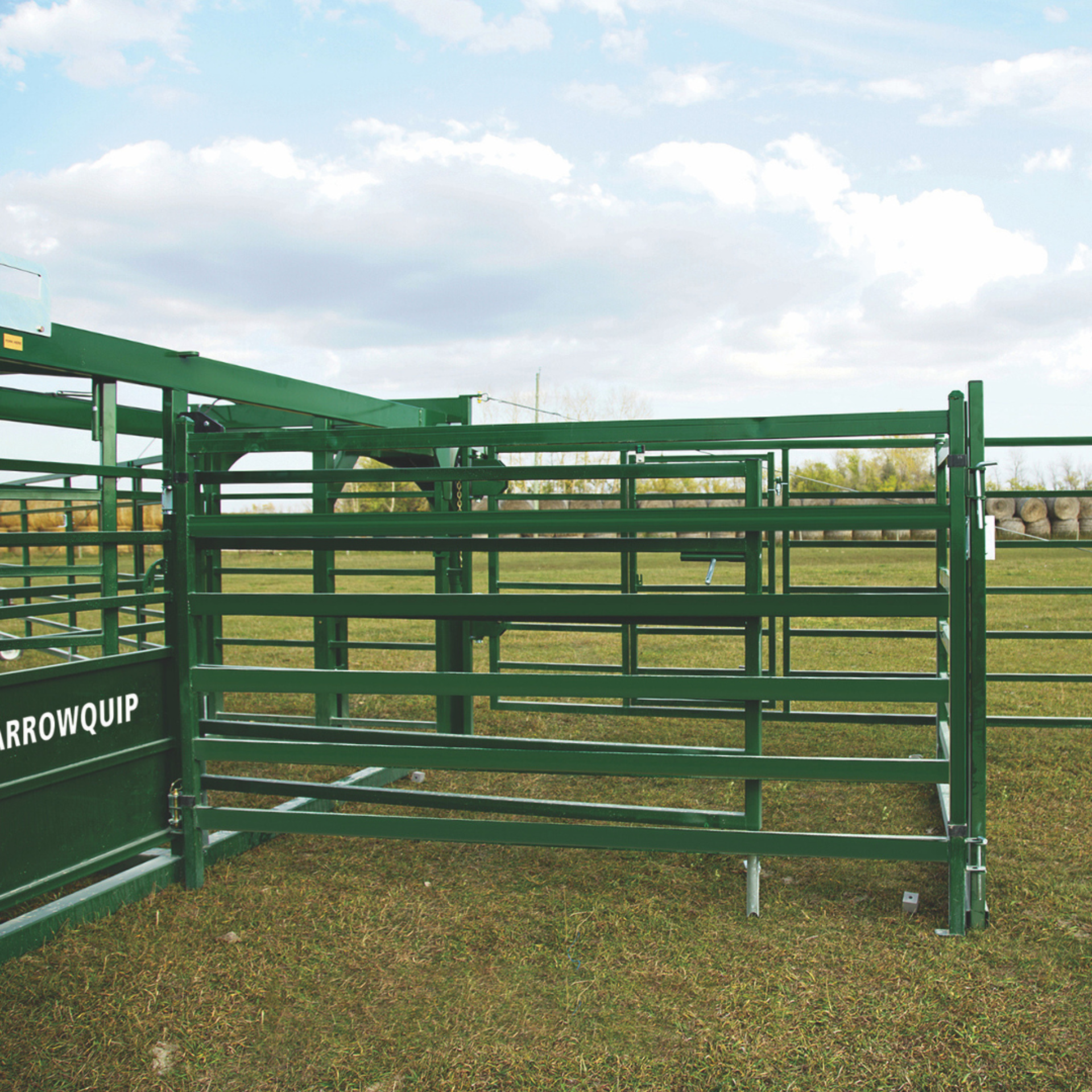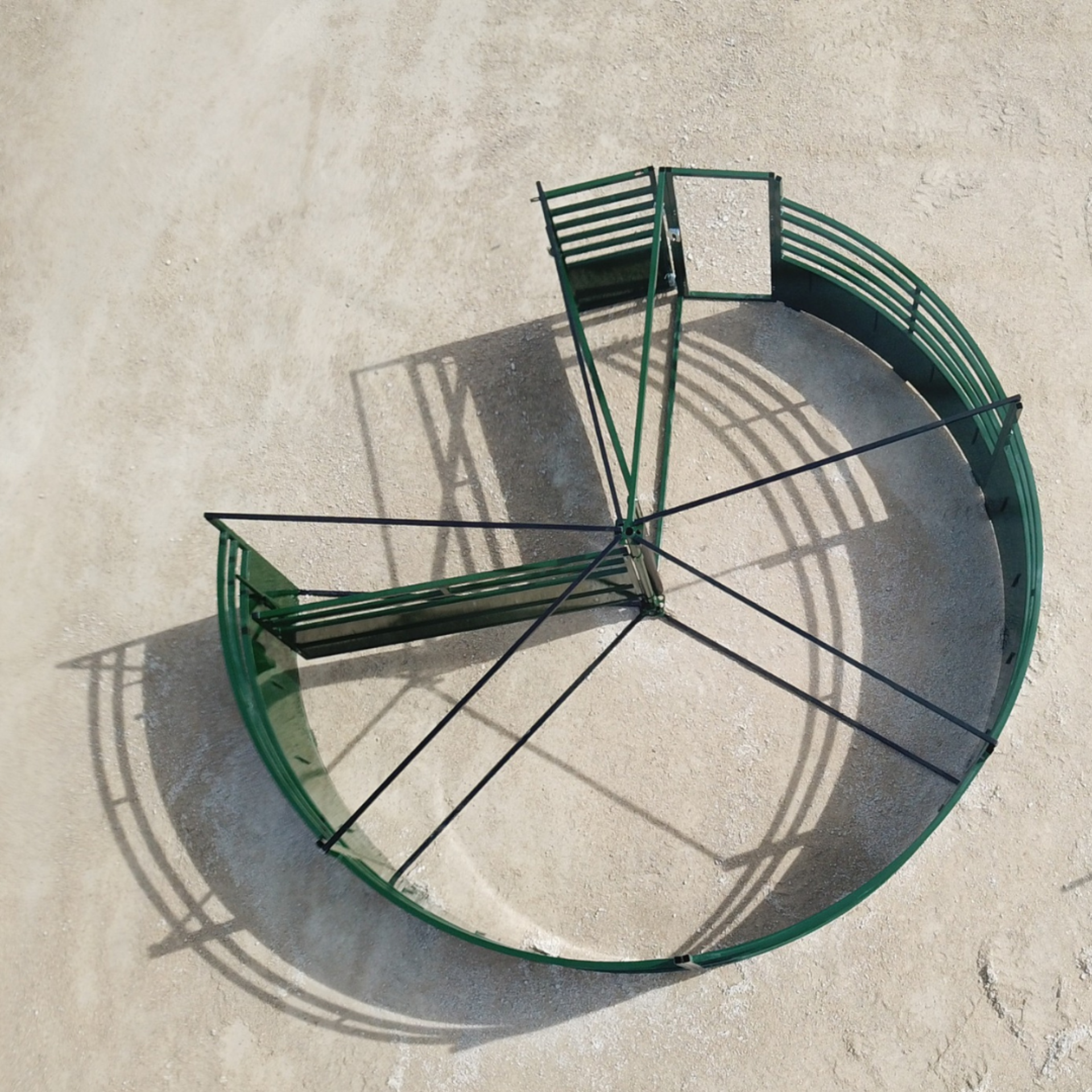How a Bud Box & Cattle Tub Compare
Understanding the Differences Between a Bud Box and a Cattle Tub
Go Back to All BlogsPosted on: April 3, 2025
Updated on: October 21, 2025
Author: Liane Carter
SHARE:
Cattle handling equipment plays a crucial role in keeping both you and your livestock safe while also keeping the handling process efficient. Two common pieces of equipment used within a cattle handling system are the Bud Box and the cattle tub. While both serve the same purpose of guiding cattle into an alley or squeeze chute, each works in a different way. Understanding the differences between the two can help you decide on the best fit for your operation.
What is a Bud Box, and How Does it Work?
A Bud Box is a simple rectangular pen designed to work with cattle’s natural instincts. Named after Bud Williams, a famous cattle handling expert, this system follows low-stress handling techniques to move cattle efficiently. Cattle enter the Bud Box and, because they always want to return the way they came, will turn back toward the handler. Then, the handler will guide the cattle into the alley or squeeze chute. The Bud Box allows cattle to follow their natural instincts while also being given simple direction, which is something they crave, to make the handling process smoother than ever.
Pros of a Bud Box

Cost-Effective: The Bud Box requires just a few panels and a gate, making it a simple solution to encourage better flow into your chute and alley system.
Encourages Low-Stress Handling: The Bud Box works with your cattle’s natural instincts, keeping them calm as they enter the system reducing stress and the likelihood of injuries.
Takes up Minimal Space: Unlike a cattle tub that often takes up a large amount of space, a Bud Box takes up minimal space, giving you more room within your system to handle cattle
Considerations for a Bud Box
Requires Good Stockmanship: When handling cattle using a Bud Box, you must first ensure that you understand cattle behavior. This will allow you to position yourself correctly around the Bud Box to give cattle the direction that they crave without increasing stress.
Will be in Close Proximity to Cattle: Unlike a cattle tub, the Bud Box requires you to be in close proximity with cattle, which for some, might be uncomfortable. However, with innovation and research, manufacturers have come to design Bud Boxes where you can help cattle move from outside the pen.
Handling Speed May Vary: If you’re working with cattle that are a little more hesitant to move, using a Bud Box may make handling time a little less efficient. With a cattle tub, you can easily control the pace of movement, whereas with a Bud Box, you have a little less control of this.
What is a Cattle Tub, and How Does it Work?
A cattle tub is a curved, enclosed system that leads cattle into an alley or squeeze chute using what’s called a sweep gate. This design takes advantage of cattle’s instinct to follow curves and move into a circular pattern when pressure is applied. Cattle enter the tub, then the rancher follows behind, closing the tub using what’s called a sweep gate. The rancher continues to push the sweep gate through the tub, guiding the cattle into the alley and through the rest of the system. The design is meant to stop cattle from turning back, making flow more predictable.
Pros of a Cattle Tub

Easy to Use: A cattle tub works well for handlers of any experience level – even those who have never handled cattle before.
More Control: Unlike the Bud Box, a cattle tub is designed specifically to prevent cattle from turning around. With the sweep gate, they are forced to continue moving forward. This allows for a more consistent flow.
Can Help Reduce Distraction: Typically, cattle sweep tubs are designed with solid sheeting. This can help shield the animal’s vision from outside distractions, helping the cattle focus on moving forward.
Considerations for a Cattle Tub
Higher Cost: Due to the cattle tubs requiring more materials and moving parts, they do tend to be the more expensive option when compared to a Bud Box.
Can Increase Stress on Cattle: Poor design or mishandling with a cattle tub can create pressure points, causing cattle to panic and increase the chances of injury to the cattle or handler. That’s why it’s important to consider the design of your cattle tub and ensure you’re educated on proper handling procedures.
Size of Cattle Matters: Unlike a Bud Box, you can’t adjust the size of your cattle tub with just a few panels, meaning you can only handle limited numbers of cattle at a time. It is recommended with a standard 8’ cattle tub you only have up to three in at a time which can have an impact on efficiency.
While the Bud Box is not a bad design, years of research and innovation in cattle handling equipment has led to more efficient and safe options for cattle tubs. Much like the car, cattle handling equipment needs to be re-evaluated for efficiency and safety on an ongoing basis. Only when you do this you can we find better ways to handle cattle, make ranches more profitable, and keep both the handler and the animal as safe as possible.
Which One is Right for You?
Both systems can be effective when used correctly, the key is in understanding how each one works and selecting the option that best fits your handling style. While it’s your own decision to choose which one will work best for your operation, it’s important to consider the above information to help you make an informed choice.
By investing in the right cattle handling system, you can improve efficiency, reduce stress on your livestock, and create a safer working environment for everyone involved.